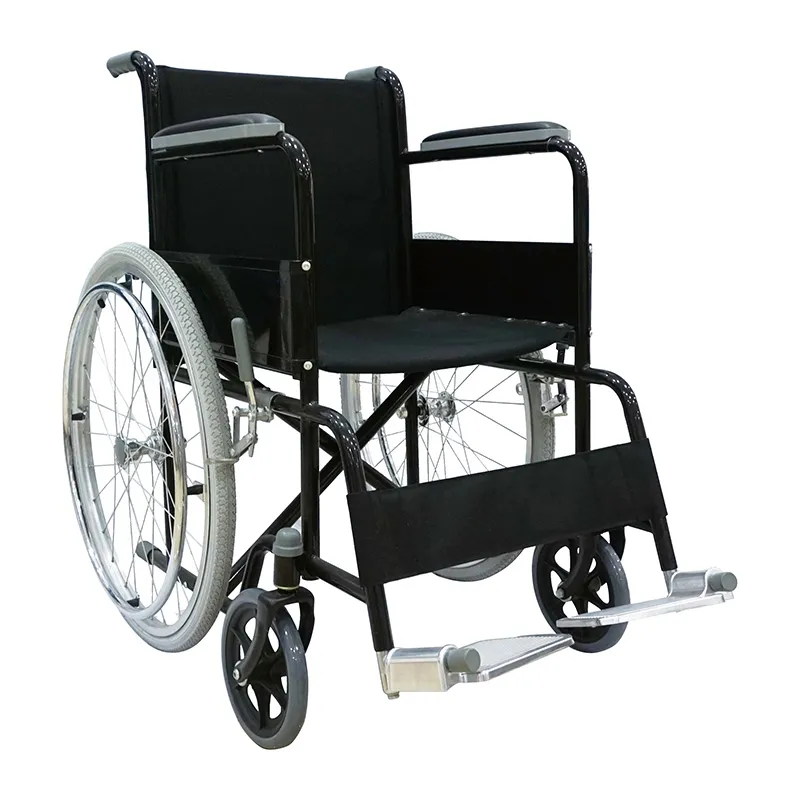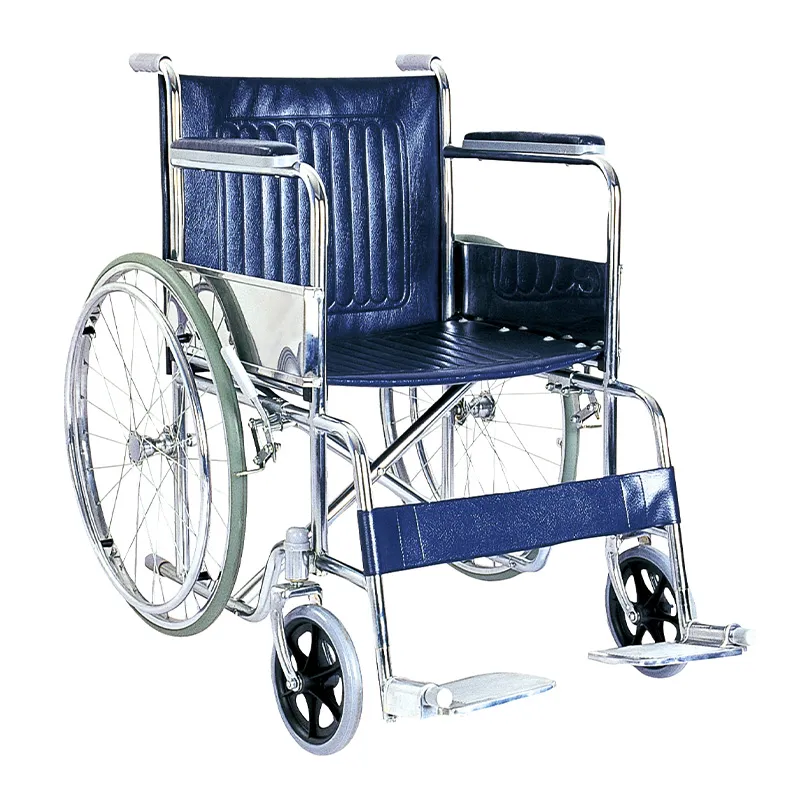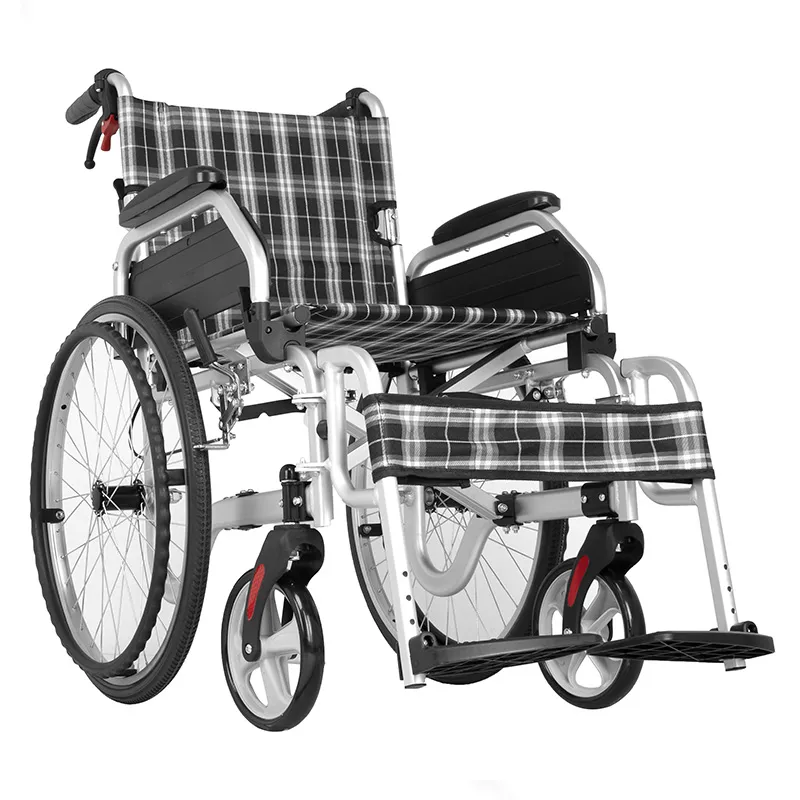
What are hospital wheelchairs made of?
2024-08-23 15:30
Wheelchairs are an indispensable part of the modern medical system. Especially in hospital environments, wheelchairs not only need to meet the basic mobility needs of patients, but also need to meet certain standards in terms of strength, durability, hygiene and operability.
So, what are hospital wheelchairs made of? This article will explore the material selection of hospital wheelchairs in depth and analyze their advantages and disadvantages.

What are the main materials of hospital wheelchairs?
The main materials of hospital wheelchairs are: steel wheelchairs (the advantages are high strength and high durability), aluminum wheelchairs (aluminum is light in weight, easy to carry and operate), titanium alloy wheelchairs (excellent corrosion resistance and durability), carbon fiber wheelchairs (extremely high strength and extremely low weight).
1. Steel wheelchair
● Features and advantages:
Steel wheelchairs are one of the most common wheelchair materials. Their main advantages are high strength and high durability. Steel has good load-bearing capacity and can withstand greater pressure and weight, so it is particularly suitable for patients with heavier weight. In addition, steel wheelchairs perform well in stability and can provide safe and reliable support.
● Disadvantages:
Although steel wheelchairs excel in strength and durability, they are heavy, which makes them relatively difficult to carry and operate. In addition, steel tends to rust in humid environments. Although many steel wheelchairs are rust-proofed, rust may still occur after long-term use, which is a problem that needs attention in environments such as hospitals that require high hygiene standards.
2. Aluminum wheelchairs
● Features and advantages:
The biggest advantage of aluminum wheelchairs is their lightness. Aluminum is light in weight, easy to carry and operate, and is especially suitable for hospital environments that require frequent movement. Aluminum has natural rust-proof properties and can maintain good condition in humid environments, which makes aluminum wheelchairs perform well in environments with high hygiene requirements such as hospitals.
● Disadvantages:
The main disadvantage of aluminum wheelchairs is that their load-bearing capacity is relatively low, which is suitable for patients with lighter weight. In addition, due to the low density of aluminum, aluminum wheelchairs are not as strong as steel wheelchairs in terms of stability, which may become a problem in some usage scenarios.
3. Titanium alloy wheelchair
● Features and advantages:
Titanium alloy is a high-strength and lightweight material with excellent corrosion resistance and durability. Titanium alloy wheelchairs are not only light in weight, easy to carry and operate, but also provide good load-bearing capacity and stability. These characteristics of titanium alloy make it the first choice for high-end wheelchair materials.
● Disadvantages:
The main disadvantage of titanium alloy wheelchairs is their high price. The production and processing costs of titanium alloys are high, so the price of titanium alloy wheelchairs is also relatively high. Although titanium alloy wheelchairs are superior in performance, their high price limits their popularity.
4. Carbon fiber wheelchair
● Features and advantages:
Carbon fiber is a new high-performance material with extremely high strength and extremely low weight. Carbon fiber wheelchairs are not only very light, easy to carry and operate, but also provide excellent load-bearing capacity and durability. These characteristics of carbon fiber make it the preferred material for high-end and sports wheelchairs.
● Disadvantages:
The main disadvantage of carbon fiber wheelchairs is their high price and complex production process. The high cost of carbon fiber materials and processing makes the price of carbon fiber wheelchairs relatively high. In addition, carbon fiber materials may crack or break when subjected to strong impact, which limits its application scope to a certain extent.

What is the basis for selecting hospital wheelchair materials?
1. Patient needs
When choosing wheelchair materials, patient needs are an important consideration. For example, for patients with light weight and who need to move frequently, aluminum wheelchairs may be a better choice. For patients with heavy weight and who need to use wheelchairs for a long time, the high load-bearing capacity and stability of steel wheelchairs are more important.
2. Hospital environment
The particularity of the hospital environment also determines the choice of wheelchair materials. Hospitals need to maintain a high level of hygiene and cleanliness, so the wheelchair material must have good rust and corrosion resistance. In addition, the lightness of the wheelchair is also an important consideration to facilitate the operation and handling of medical staff.
3. Cost factors
Cost factors are also an important factor to consider when choosing wheelchair materials. Although titanium alloy and carbon fiber wheelchairs are superior in performance, their high prices limit their popularity. Relatively speaking, steel and aluminum wheelchairs are more easily accepted and used by most hospitals due to their lower cost.

Conclusion
Steel wheelchairs are suitable for heavier patients due to their high strength and durability, but they are heavy and prone to rust. Aluminum wheelchairs are suitable for lighter patients who need to move frequently due to their lightness and rust resistance, but their load-bearing capacity and stability are relatively low. Although titanium alloy and carbon fiber wheelchairs have superior performance, their high prices limit their popularity.
In actual applications, hospitals usually choose wheelchairs of different materials according to the needs and usage scenarios of different patients to meet the diverse needs of patients.








